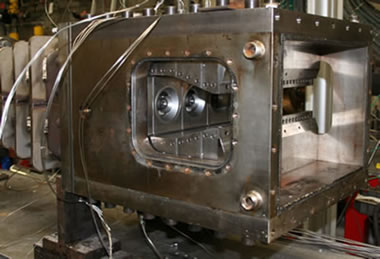The Tosca []1 program of the Astech [2] center, completed in late 2012, has led to major advances in the development of a new Snecma burner architecture; a technology that must replace conventional burners to comply with future emission standards for aircraft engines.
It was a case of improving the operability of a TAPS (Twin Annular Pre-Swirl) type chamber injection system developed by Snecma, designed to reduce cruising flight NOx emissions by 50 to 60%. Research engineers at ONERA had a double challenge: on the one hand, combustion stability and quality when idling and, on the other hand, reigniting the engine at high altitude.
Thus, they designed and optimized an aerodynamic device to ensure the proper functioning of the burner for all engine speeds, without increasing carbon monoxide CO and unburned fuel emissions at the low speed of engine idling. A joint Onera-Snecma patent is also underway.

Sector of a chamber with 4 injection systems representative of a complete annular burner, mounted on the M1 bench
They also showed, for the first time in France, that this new burner design can respond to the operational constraints of high altitude engine reignition. Tests conducted on ONERA’s M1 bench at Palaiseau, as a Snecma-Onera collaboration effort, have made it possible to study the mechanisms of burner ignition and flame spread from one injector to the other, using high speed cameras and OH radical viewing, even in a vacuum (0.6 bar) and under cold air (-15 ° C) conditions, resembling the environment conditions at high altitude.
Snecma considers that multipoint layer technology is currently mature enough to be integrated into a complete annular chamber project (TRL3 5-6). This technology will be integrated into the European Lemcotec project, in which ONERA and Snecma are involved.
OH radical view at 0.6 bar,
OH– combustion "tracer"
[1] Technologies for the operability of injection systems in Aeronautical Chambers, a program of the Astech aerospace competitiveness cluster, led by Snecma, bringing together partners INCKA – MEGGIT-TURBOMECA-EM2C and ONERA
[2] ASTech Paris Region: French competitiveness cluster specialized in aeronautics, space and onboard systems (created in 2007)
[3] TRL: Technology Readiness Level: measurement system, from basic research (1) to the operating system (9), used by many companies and agencies to assess the level of maturity of a technology. TRL 5-6 refers to the validation of a component or the demonstration of a prototype in a representative environment.




